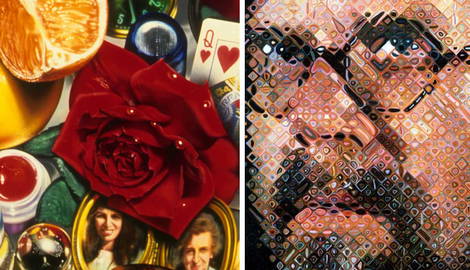
Photorealism emerged as a popular painting style in 1960s New York and California. Artists mimed photography’s technical precision and microscopic attention to detail, creating images that appeared entirely machine made. Its ideas quickly spread throughout much of the United States and Europe, and, although it has evolved over the years, it is still a prevalent painting style today. But what was it about this painting style that took the art world by storm? Was it simply about painstakingly copying photographs in paint, or was there more to it? We examine some of the most important reasons why Photorealism took hold, and the ways it opened up exciting new ways of thinking about and making art.
1. Photorealism Was About Technical Precision

One of the key concepts around Photorealism was its emphasis on technical precision. Though this was predominantly a painting style, artists aimed to completely remove any traces of their hand, so the end result looked entirely mechanical. To make life even more difficult, artists painting in this style often looked for particular technical challenges, such as the shiny surface of glass, reflections in mirrors, or the invocation of photographic light. In her ‘Vanitas’ still life studies American artist Audrey Flack painted all manner of glossy surfaces, from mirrors and glass tabletops to fresh fruit and jewelry.
2. Photorealism Transcended the Limitations of Photography

Some photorealist artists explored the use of multiple photographic sources within one painting, and this allowed them to transcend the single-point perspective found in an individual photograph. Others zeroed in on incredible attention, such as skin pores or hair follicles that would be hard to capture in one single photographic image. One of the most famous examples is American painter Chuck Close’s Self Portrait, a vast, looming depiction of the artist’s face painted in sharp focus. To challenge himself further, Close also painted the shine of his glasses and a half burning cigarette hanging from his lips. German artist Gerhard Richter toyed further with the boundaries between painting and photography, painting blurred photographic images to give them a painterly feel.
3. It Celebrated Popular Culture

Many photoreal artists were closely aligned with Pop Art, appropriating images from popular culture and normal life such as magazine adverts, postcards, store fronts and street scenes. Like Pop Art, Photorealism took a postmodern approach. It rejected the elitist, utopian ideals of high modernism and abstraction, connecting art back in with the real world and the experiences of normal people. British artist Malcolm Morley made paintings based on old postcards of ocean liners, while American artist Richard Estes painted the shiny veneer of shop facades and cars passing by on the street. A deadpan style emerged out of this school of thought, with a deliberate emphasis on seemingly banal, mundane subjects, which were painted in a flat, detached manner, yet with incredible skill. British artist John Salt’s paintings of hardware stores and beaten up old cars demonstrate this strand of Photorealism.
4. They Explored New Techniques

To create such neat precision, photorealists embraced a range of techniques. Many used processes normally reserved for commercial painters, such as light projectors for upscaling photographs onto canvas, and airbrushes, which allowed artists to create flawless, mechanized effects that completely hid any traces of the hand that made it. Others worked with grids, laying out a gridded pattern over a small photograph and faithfully copying each tiny square of the grid piece by piece. Close used grids throughout his career and he compared this methodical process to knitting, building up a larger design row by row. In his later art, Close made this process more explicit, enlarging each gridded cell and adding in abstract oblongs and circles.










